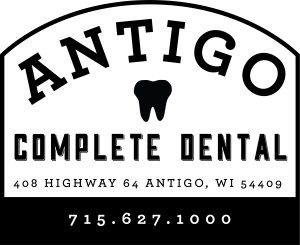
Dr. McGlennen: Tell me how you use OralDNA® salivary diagnostics.
Ashley RDH: I use OralDNA® salivary diagnostics to assist with the diagnosis and treatment planning of periodontal disease. The MyPerioPath® and Alert 2™ testing options are typically the tests we recommend most frequently.
Dr. McGlennen: What are the top two things to consider when you select a patient for testing?
Ashley RDH: I consider the history of their disease. I routinely recommend testing for any patient who is newly experiencing periodontitis, but when patients are in an active phase of periodontitis, I also recommend testing. Having a detailed medical history is so important as it gives great insight to me as a hygienist, when trying to assist a patient in how they are going fight this disease. When I see patients with an extensive medical history and/or medical conditions that correlate with periodontal disease such as heart disease and diabetes, I highly recommend testing.
Dr. McGlennen: What are the biggest benefits to using salivary diagnostics?
Ashley RDH: The knowledge of what cannot be seen with the human eye alone is the biggest benefit. The difference between knowing that bacteria are present and actually knowing what bacteria are present can assist greatly in formulating a treatment plan. In addition to this, knowing the population number of these present bacteria at the time of diagnosis and post-treatment helps to determine treatment success.
Testing for genetic susceptibility is also a huge benefit. Oftentimes, you can look at a patient’s medical history and somewhat predict if a patient will be susceptible to recurrent periodontal disease (such as if they’re an uncontrolled diabetic). Having a genetic test such as MyPerioID® IL-6, which is part of Alert 2™, gives more definitive answers to the patient.
Dr. McGlennen: What is your favorite part of the MyPerioPath® results? Why?
Ashley RDH: My favorite part of the MyPerioPath® result is not just knowing what bacteria are present, but also knowing what level they’re at. I find it interesting to know how many of a particular bacteria are present; what is the patient’s bacterial load.
Dr. McGlennen: You are now incorporating Alert 2™, how has this impacted your practice? What was the reason to begin including Alert 2™?
Ashley RDH: Actually we have always utilized the elements of Alert 2™ – MyPerioPath® and MyPerioID® IL-6. We were happy, when OralDNA® combined them as Alert 2™. We value having the genetic information and the bacterial load information, so this test has blended well into our periodontal protocol. We always educate our patients on both tests and why doing them simultaneously is important. Most often, patients will do both tests, but typically if they decline a test it is the MyPerioID® IL-6. We also offer the MyPerioPath® to patients who have had the Alert 2™ or MyPerioID® in the past.
Dr. McGlennen: Antigo Dental Care is located in Northern Wisconsin. How do your patient’s respond to this technology? What is their #1 question?
Ashley RDH: Our patients really value this technology. After we educate them on the disease, they have lots of questions regarding treatment options. Patients understand the bacterial component and aside from “what is the cost?” their main question is “will I need an antibiotic?” Salivary diagnostics makes this question very easy to answer. I like patients to understand that this disease is very complex and the more information we have the easier it will be to control.
Dr. McGlennen: What is your biggest challenge? How do you overcome that obstacle?
Ashley RDH: Our biggest challenge is cost. I try to overcome this obstacle with patient education. I feel knowledge is power, not just to me, but also to my patients. The more the patient is educated about their condition the easier it will be for them to make decisions regarding their treatment. I try not to focus too hard on the testing immediately, but rather educate them about the etiology, diagnosis and treatment options of periodontal disease first. After the patient has a better understanding of the disease, they seem to find the test very valuable and want to pursue it.
Dr. McGlennen: If a new OralDNA® provider were to ask you for advice, what would be your best tip?
Ashley RDH: My best tip for a new OralDNA® provider would be to educate yourself about the tests and don’t be afraid to recommend them. As I have started recommending more tests and seeing the results, I have become more comfortable not only recommending the tests but also explaining them to the patient. I enjoy getting the test results back and putting all the information together to formulate a treatment plan.
Dr. McGlennen: Where do you see salivary diagnostics in 3-5 years? 10 years? What would be the impact on your practice/ patients?
Ashley RDH: In 3-5 years I hope to see Alert 2™ testing performed for every case of active periodontal disease and a follow-up test post-treatment.
In 10 years, I hope salivary diagnostics are standard of care for all patients. As hygienists we are “prevention specialists” and part of prevention is knowledge of what a patient is susceptible to. I also hope to see salivary diagnostics done as a baseline for all new patients. My hope is that in the years to come we use the this testing more often for determining “risk” and we are more proactive than reactive when recommending testing.
For more information on how to become an OralDNA Provider – scan HERE: 
- Interview with Ashley Leiterman - February 22, 2019
